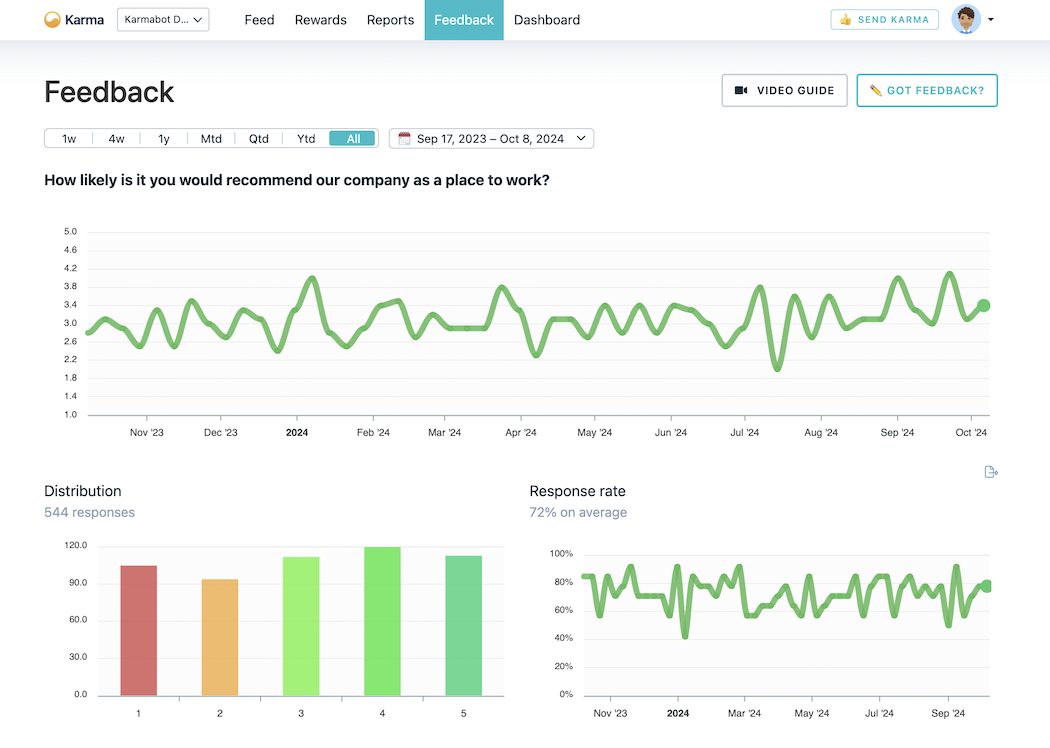Company culture has become one of the most important factors in employee satisfaction, retention, and productivity. A thriving company culture boosts morale, fosters collaboration, and aligns your team around a shared purpose. But measuring culture can feel elusive. How do you quantify something as intangible as culture?
Understanding and measuring company culture is crucial, especially when your goal is to improve it. You need to know what’s working, what isn’t, and how your employees actually feel about their work environment. In this article, we’ll walk through practical, actionable ways to measure company culture without relying on vague buzzwords.
Why Measure Company Culture?
Company culture isn’t just a feel-good concept; it impacts your bottom line. Studies show that strong cultures drive higher employee engagement, which leads to increased productivity, improved retention, and even better financial performance.
Measuring culture allows you to:
- Identify gaps: See where your culture is not aligned with your values or employee expectations.
- Promote inclusivity: Understand how different groups experience the workplace differently.
- Make informed decisions: Use data to craft strategies for improving employee satisfaction and engagement.
Start with Defining What Culture Means for Your Organization
Before you can measure company culture, you need to define what it means for your organization. Culture is the shared set of values, behaviors, and attitudes that shape the way employees interact and perform their jobs. It’s unique to every company, so start by identifying the core elements of your culture.
Here are a few questions to guide you:
- What are your company’s core values?
- How do your employees describe your workplace?
- What behaviors are rewarded or discouraged?
- How does your leadership team communicate and interact with employees?
Once you have a clear understanding of your culture, you can move forward with measurement.
Key Indicators to Measure Company Culture
Let’s dive into some measurable indicators of company culture that can give you actionable insights.
1. Employee Engagement
Employee engagement is a reliable barometer for company culture. Engaged employees are more likely to be enthusiastic, productive, and committed to their work. To measure engagement, consider using:
- Surveys: Anonymous employee engagement surveys can offer insights into how connected employees feel to their work and the organization. Ask about job satisfaction, whether they feel valued, and their sense of belonging.
- Pulse Checks: Frequent pulse surveys, which are short and to the point, help gauge real-time employee sentiment. They can capture immediate feedback on changes or initiatives and track how engagement shifts over time.
2. Turnover Rate
A high employee turnover rate often signals cultural problems. Whether employees are leaving for more supportive workplaces or for companies with better benefits, turnover can be a reflection of dissatisfaction.
To get a sense of culture through turnover, ask yourself:
- Are certain teams experiencing higher turnover rates than others?
- Is there a pattern in the reasons employees give for leaving (e.g., lack of growth opportunities, poor management)?
Tracking your turnover rate helps you spot trends and take action before they become more significant issues.
3. Employee Net Promoter Score (eNPS)
Employee Net Promoter Score (eNPS) is a metric that asks employees a simple question: “On a scale of 0 to 10, how likely are you to recommend this company as a place to work?”
Scores of 9 and 10 are considered promoters—employees who are enthusiastic about your company. Scores between 0 and 6 are detractors—those who are dissatisfied. eNPS can give you a snapshot of employee loyalty and satisfaction and helps identify cultural issues that may be flying under the radar.
4. Internal Recognition Programs
Tracking the use and effectiveness of internal recognition programs (like Karma) offers valuable insight into culture. Do employees regularly acknowledge each other for their efforts? Are people celebrating achievements and milestones? If recognition is low, it may point to a lack of camaraderie or support.
Use your recognition platform data to track:
- How often employees give and receive recognition.
- Which values are most frequently recognized.
- The distribution of recognition across teams or departments.
This data can reveal whether your culture encourages collaboration and mutual support or if it needs improvement in these areas.
5. Communication Patterns
Culture is often shaped by how people communicate, especially between leadership and employees. Analyze the frequency, openness, and transparency of communication across different levels of the organization. This can include:
- Employee feedback: Are employees comfortable providing feedback, and how is that feedback acted upon?
- Leadership transparency: Do leaders communicate clearly about the company’s vision, mission, and challenges?
- Information flow: How freely and efficiently does information flow within teams and departments?
Healthy communication patterns can signify a trusting, supportive culture, while breakdowns in communication often highlight areas of concern.
Qualitative Methods to Understand Culture
While quantitative data offers a clear, measurable picture of company culture, qualitative insights are just as essential. Here’s how to gather deeper context behind the numbers.
1. Focus Groups
Invite a diverse group of employees to participate in small focus groups where they can share their thoughts on the company culture. This can be an open discussion, or you can focus on specific themes, such as teamwork, leadership, or inclusivity.
Focus groups allow you to:
- Uncover specific cultural issues or dynamics that may not be evident in surveys.
- Understand different employee perspectives, particularly from underrepresented groups.
2. Exit Interviews
Exit interviews provide an opportunity to gain unfiltered insights from employees who are leaving. They may feel more comfortable speaking candidly about their experiences at the company. Questions to ask:
- What led to your decision to leave?
- How would you describe the company’s culture?
- What could we have done better to support you?
This feedback is invaluable in identifying recurring issues that may be impacting retention.
3. One-on-One Check-ins
Regular one-on-one meetings between managers and employees are a powerful tool for understanding culture on an individual level. Managers can ask employees about their personal experiences and any obstacles they’ve encountered.
Some questions to ask:
- How do you feel about your work-life balance?
- Do you feel supported by your manager and your team?
- Is there anything about the culture you would change?
These conversations help build trust and show employees that their feedback is valued.
The Role of Recognition in Culture
Recognition plays a pivotal role in shaping and reinforcing company culture. When employees feel seen and appreciated for their efforts, they are more likely to feel engaged and connected to the company. Using a recognition tool like Karma allows you to:
- Reinforce core values by recognizing behaviors that align with them.
- Build a culture of positivity and support.
- Create transparency around achievements and contributions.
By tracking how often and why recognition is given, you gain insight into the behaviors and values that are most celebrated in your organization. This can highlight strengths in your culture or areas where more support is needed.
Conclusion
Measuring company culture requires a combination of quantitative metrics and qualitative insights. By using tools like surveys, eNPS, recognition data, and communication analysis, you can gather a broad understanding of your company’s cultural health. Focus groups, exit interviews, and one-on-one meetings offer the personal context behind these numbers, helping you dig deeper into employee experiences.
One way to strengthen your culture is by incorporating employee recognition, and Karma makes that easy. With Karma’s recognition platform, you can celebrate achievements, reinforce core values, and build a more connected team. Plus, Karma’s survey feature in Slack enables you to collect real-time feedback from your employees, making it simple to measure engagement and track culture shifts directly within your workflow.

By continuously measuring and refining your culture, you’ll create a workplace where employees thrive, and your business succeeds.
Try out Karma for Slack with our demo and subscribe to your 30-day free trial:


 10 Consistent Ways to Appreciate Employees
10 Consistent Ways to Appreciate Employees